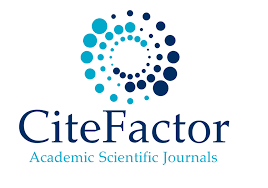The Correlation Between Students’ English Proficiency and Their Academic Achievement at Assalam Orphanage
DOI:
https://doi.org/10.53682/jeltec.v4i2.12767Keywords:
Differentiated learning; English score; Correlation; EFL classroomAbstract
The objective of this research was to find out whether or not there was a correlation between differentiated learning and students’ English scores. The research was conducted at UPT SMAN 14 Jeneponto, with data collected through questionnaires distributed to students and from English teachers. The results of the correlation analysis using the Pearson Product Moment showed a correlation coefficient of 0.522, indicating a quite strong correlation between differentiated learning and students’ English scores. This suggests that differentiated learning had a positive influence on students’ academic performance in English. Although the correlation was not very strong, the findings indicated that when students were taught according to their individual needs, interests, and learning styles, their English achievement tended to improve. It can be concluded that differentiated learning contributed to students’ English learning outcomes.
References
Ahmed, R. (2021). Peer review in academic writing: Different perspectives from instructors and students. Tesol Journal, 12(1). https://doi.org/doi.org/10.1002/tesj.537
Ainia, L. N. (2020). Educational philosophy of Ki Hajar Dewantara and its relevance to character education in Indonesia. International Journal of Multicultural and Multireligious Understanding, 7(10), 1-7. https://doi.org/10.18415/ijmmu.v7i10.2024
Apriati, L., Gunawan, W., & Purwanto, A. (2023). The use of differentiated instruction to increase students' learning outcomes in English subjects on recount text. Indonesian Journal of English Language Teaching and Applied Linguistics, 7(1), 101-113.
As Sabiq, R. M., Cahyani, N. H., & Fahmi, N. (2021). Students’ interest and its influence on English learning motivation. Journal of Language Teaching and Research, 12(4), 640-646.
Bobo, F., Kamau, J., & Amukowa, W. (2020). Factors influencing teaching and learning: An analysis of instructional strategies. International Journal of Educational Research, 8(2), 25-34.
Dwianti, R., Kurniawan, D. A., & Prasetyo, E. (2021). 21st-century learning skills in Indonesia: A conceptual overview. Journal of Education and Practice, 12(3), 1-10.
Galante, A., & Dela Cruz, J. W. N. (2024). The fall of bilingualism: Teacher candidates’ voices on the implementation of critical plurilingualism in English language teaching. International Multilingual Research Journal, 18(3), 254–273. https://doi.org/10.1080/19313152.2024.2326366;
Ilmi, N. (2021). Differentiation strategies to teach slow learners in English classrooms. ELT Journal, 10(1), 15-22.
Irawan, L. A., & Ahmad, R. (2024). Reading Comprehension and Test-Taking Strategies of Different Achievement Levels. Journal of Foreign Language Teaching and Learning, 9(2), 180–200. https://doi.org/10.18196/FTL.V9I2.22663
Kusdiyanti, H., Zandra, R. A., Wijaya, R., Febrianto, I., Rosyidah, U. J., & Kalbuana, N. (2024). Development of Heutogogy Model as a Framework to Prepare Self-Determined Educator: A Case Study in Indonesia. Journal of Intercultural Communication, 24(3), 79–87. https://doi.org/10.36923/jicc.v24i3.820
Liando, N. V. F., dallyono, R., Tatipang, D. P., & Lengkoan, F. (2023). Among English, Indonesian and local language: Translanguaging practices in an Indonesian EFL classroom. Indonesian Journal of Applied Linguistics, 13(1), 204–216. https://doi.org/10.17509/IJAL.V13I1.58270
Liando, N. V. F., & Tatipang, D. P. (2022). English or Indonesian Language? Parents’ Perception Toward Children’s Second Language Learning Context. Jurnal Lingua Idea, 13(1), 61–75. https://doi.org/10.20884/1.JLI.2022.13.1.5749
Liando, N. V. F., Tatipang, D. P., & Lengkoan, F. (2022). A Study of Translanguaging Practices in an EFL Classroom in Indonesian Context: A Multilingual Concept. Research and Innovation in Language Learning, 5(2), 167–185. https://doi.org/10.33603/RILL.V5I2.6986
Mulyawati, I., Rahmawati, N., & Fitriyani, A. (2022). The effectiveness of differentiated learning for cognitive development. Jurnal Pendidikan dan Pembelajaran, 11(3), 208-215.
Parviz, M. (2024). AI in education: Comparative perspectives from STEM and Non-STEM instructors. Computers and Education Open, 6, 100190. https://doi.org/10.1016/J.CAEO.2024.100190
Purwaningsih, D., Susilawati, S., & Nugroho, W. (2022). The impact of educational components on learning outcomes. Journal of Education and Learning, 11(1), 77-84.
Pritchard, A. (2009). Ways of learning: Learning theories and learning styles in the classroom (2nd ed.). Routledge.
Setiyo, I. (2022). Differentiated learning in the Merdeka Curriculum: A strategy for inclusive education. Journal of Educational Strategy, 4(2), 73-80.
Tatipang, D. P., Dollah, S., Weda, S., Sakkir, G., Liando, N. V. F., & Lengkoan, F. (2025). I am well aware of it, Yet, my Students have to Learn in comfort way: Translanguaging as Mediated English Language Pedagogy. Journal of English Culture, Language, Literature and Education, 13(2), 277–296. https://doi.org/10.53682/ECLUE.V13I2.4598
Tomlinson, C. A. (2014). The differentiated classroom: Responding to the needs of all learners (2nd ed.). ASCD.
Tran, T. Q., & Duong, T. M. (2020). EFL learners’ perceptions of factors influencing learner autonomy development. Kasetsart Journal of Social Sciences, 41(1), 194–199. https://doi.org/10.1016/J.KJSS.2018.02.009
Variacion, L., Marpaung, M., & Hutapea, A. (2021). Differentiated instruction for improved cognitive learning outcomes. Jurnal Pendidikan dan Pengajaran, 54(4), 543-552.
Wuntu, C. N., Tatipang, D. P., & Ali, M. I. (2024). Literature Pedagogy for English Development: Investigating Preferences, Motivation and Best Practices Toward the Implementation. Teaching English Language, 18(2), 1–34. https://doi.org/10.22132/TEL.2024.456555.1608
Xin, S., Ping, W., & Qin, Y. (2024). Twenty years’development of translanguaging: a bibliometric analysis. International Journal of Multilingualism, 21(1), 209–235. https://doi.org/10.1080/14790718.2021.2007933
Downloads
Published
How to Cite
Issue
Section
License
Copyright (c) 2025 Journal of English Language Teaching, Literature and Culture

This work is licensed under a Creative Commons Attribution-NonCommercial-ShareAlike 4.0 International License.


















